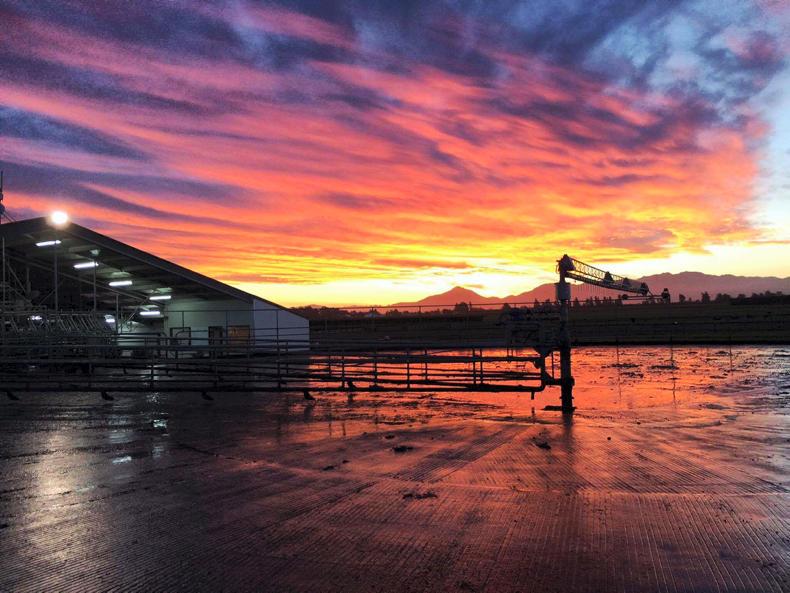
LOYALTY CODE:
The paper code cannot be redeemed when browsing in private/incognito mode. Please go to a normal browser window and enter the code there

LOYALTY CODE:
The paper code cannot be redeemed when browsing in private/incognito mode. Please go to a normal browser window and enter the code there
This content is copyright protected!
However, if you would like to share the information in this article, you may use the headline, summary and link below:
Title: Student blog: milking three times a day in New Zealand
Agricultural science student Roisin Horan is in New Zealand working on a 1,400-cow dairy farm. Here, she explains the reasons for milking three times a day at Kolmar Dairies.
https://www.farmersjournal.ie/student-blog-milking-three-times-a-day-in-new-zealand-282003

ENTER YOUR LOYALTY CODE:
The reader loyalty code gives you full access to the site from when you enter it until the following Wednesday at 9pm. Find your unique code on the back page of Irish Country Living every week.

CODE ACCEPTED

You have full access to farmersjournal.ie on this browser until 9pm next Wednesday. Thank you for buying the paper and using the code.

CODE NOT VALID
Please try again or contact us.
For assistance, call 01 4199525
or email subs@farmersjournal.ie
Sign in

Incorrect details
Please try again or reset password
If would like to speak to a member of
our team, please call us on 01-4199525
Reset
password
Please enter your email address and we
will send you a link to reset your password

If would like to speak to a member of
our team, please call us on 01-4199525
Link sent to
your email
address
![]()
We have sent an email to your address.
Please click on the link in this email to reset
your password. If you can't find it in your inbox,
please check your spam folder. If you can't
find the email, please call us on 01-4199525.
![]()
Email address
not recognised
There is no subscription associated with this email
address. To read our subscriber-only content.
please subscribe or use the reader loyalty code.
If would like to speak to a member of
our team, please call us on 01-4199525
 This is a subscriber-only article
This is a subscriber-only article
Update Success !



For a six-week period at Kolmar Dairies, from 1 February to 10 March, the herd of 500 cows were milked three times a day. This herd consisted of high-yielding cows producing 30 litres and more of milk.
Morning milking started at 4am and evening milking started at 1pm, to facilitate the third milking which would start at 8pm.
Four extra staff were employed to carry out the three times-a-day milking and the working day was spilt into two shifts.
The morning shift required five people and began at 3.30am until 1pm, while the four people on the evening shift began at 1pm and worked until 10pm.

Labour, along with extra feed costs and electricity, are the main additional inputs necessary to run a three times-a-day milking system.
To pay for those extra inputs, the aim is to obtain an extra 10l of milk per cow without compromise to the cow’s health or fertility.
During the six-week period, the cows produced on average an extra 4,000l per day, with milk solids also slightly increasing and exceeding the farm average of 2.3kg of milk solids per cow.
Cow comfort
There were also some other positives, in terms of animal health and comfort. The majority of these high-producing cows have quite large udders and by milking these cows three times a day, cow comfort was improved.
There was a dramatic drop in somatic cell count and reduction in the incidence of mastitis on the farm
However, the most evident and encouraging outcome of milking three times a day was a dramatic drop in somatic cell count and reduction in the incidence of mastitis on the farm. The number of cows in the ‘‘red’’ (mastitis) herd decreased dramatically, saving the farm money on mastitis treatments.
Kolmar Dairies will return to milking three times a day in August when the spring herd of just over 1,000 cows have calved down.
Roisin Horan is an agricultural science student at WIT and is travelling as part of his professional work experience (PWE) programme. Roisin is a winner of the Agricultural Science Association – PWE Travel Bursary Award which is supported by the Irish Farmers Journal.
Student blog: from no tillage to 9,000ac of crops in Canada
Student blog: branding calves and injecting hormones in Canada
Greenfield Farm update: quality May grass driving milk production
SHARING OPTIONS: